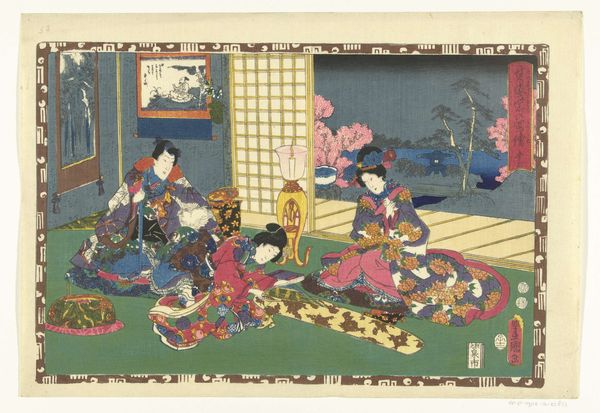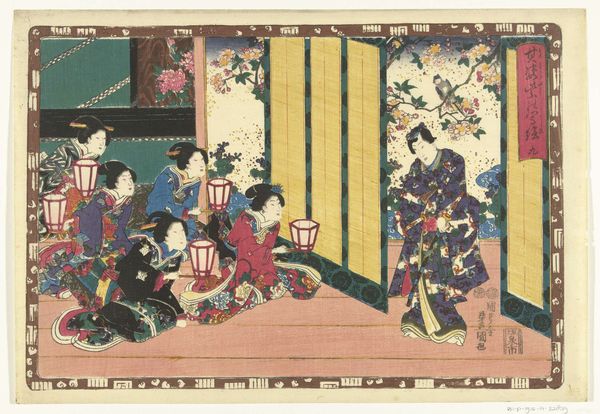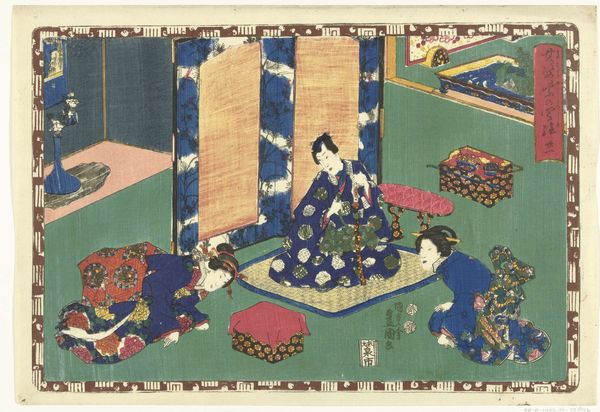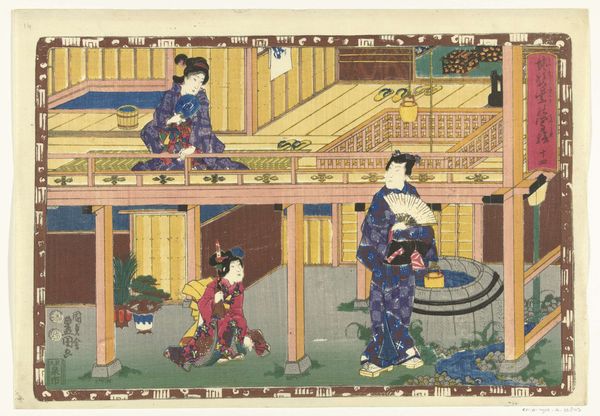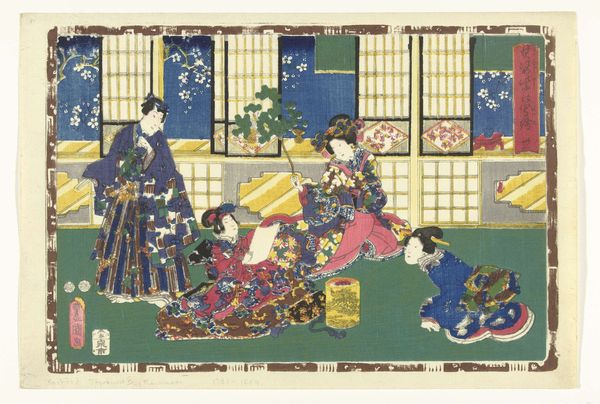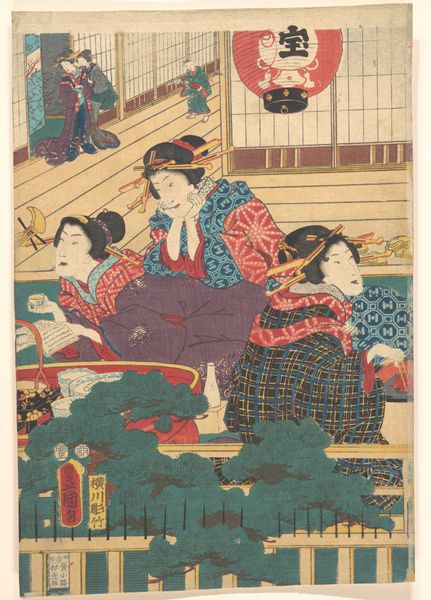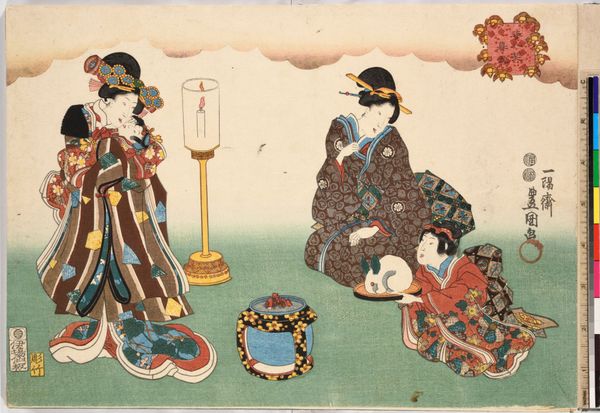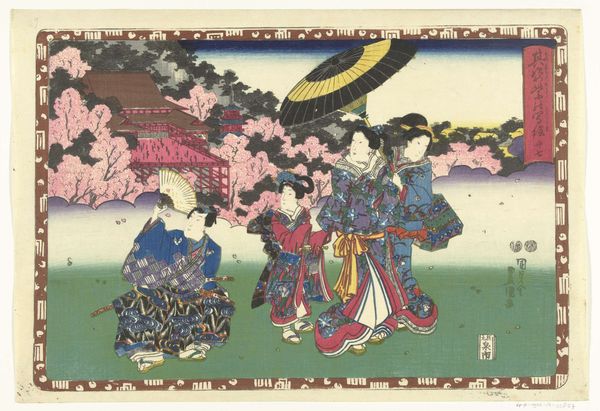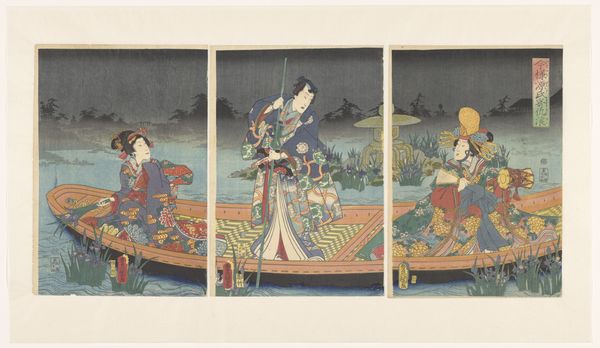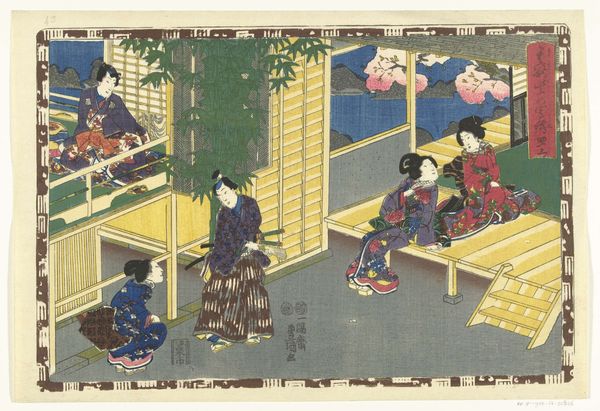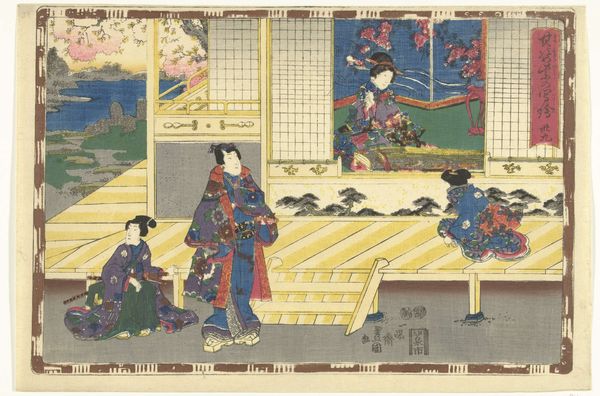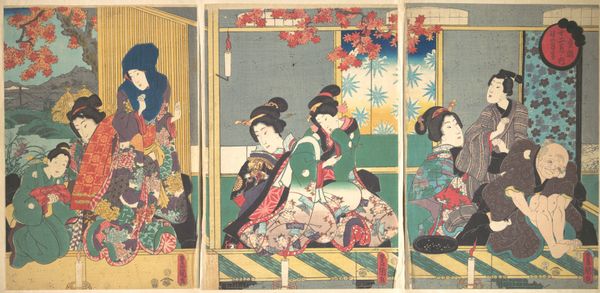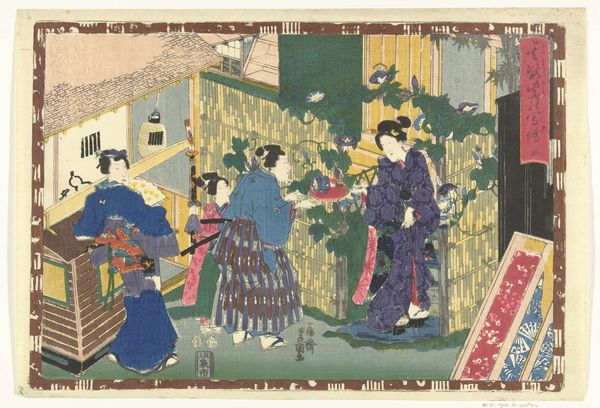
print, woodblock-print
# print
#
asian-art
#
ukiyo-e
#
pattern background
#
woodblock-print
#
japanese
#
genre-painting
#
decorative-art
#
decorative art
Dimensions: height 260 mm, width 379 mm
Copyright: Rijks Museum: Open Domain
A man is comfortably seated on a brown patterned cushion, dressed in pale floral robes. Beside him stands a woman in a flowing pink gown. A woman and a girl bow before them, hands touching the flat green floor. Why are these two figures bowing? Could the man and woman be royalty? The interior scene is backed by a folding screen which is decorated with natural leaves and the image of a graceful phoenix. In Japanese tradition, the phoenix (Ho-ō) can symbolise imperial power and a new ruler. This is a colourful woodcut print on paper, now housed in Amsterdam’s Rijksmuseum. It was created between 1847 and 1850 by the Japanese ukiyo-e artist Utagawa Kunisada (1786-1865), the all-time bestselling designer of Japanese woodblock prints. Ukiyo-e means ‘pictures of the floating world’, and refers to a genre which flourished towards the end of the Edo period (1603-1867). Edo was the former capital city of Japan. Utagawa Kunisada was best known for ‘bijinga’, or images of attractive women dressed in the latest fashions. The outfits in this print are seriously impressive! These fashions quickly developed throughout the nineteenth century, so ukiyo-e artists had to work quickly to stay up to date. Kunisada himself produced almost 14,500 designs across his lifetime! This print is known as ‘Hoofdstuk 1’, which translates to ‘Chapter 1’. This might suggest that it serves as an introduction to a larger narrative. What do you think might unfold in the next woodcuts in the series? ‘Hoofdstuk 1’ has a magnificent brown border which consists of geometric line patterns. These are known as Genji symbols, as they are taken from a traditional Japanese literary classic: ‘The Tale of Genji’. Utagawa Kunisada was undervalued by Western critics throughout his career. He was referred to as an ‘undistinguished artist’ who produced ‘meaningless, careless’ prints. Ouch! The artist has come to be re-examined and has been the subject of numerous exhibitions in Europe and the United States in recent decades. His portrayals of diverse groups of women are thought to offer a glimpse into the everyday life of families in nineteenth-century Japan.
Comments
No comments
Be the first to comment and join the conversation on the ultimate creative platform.
